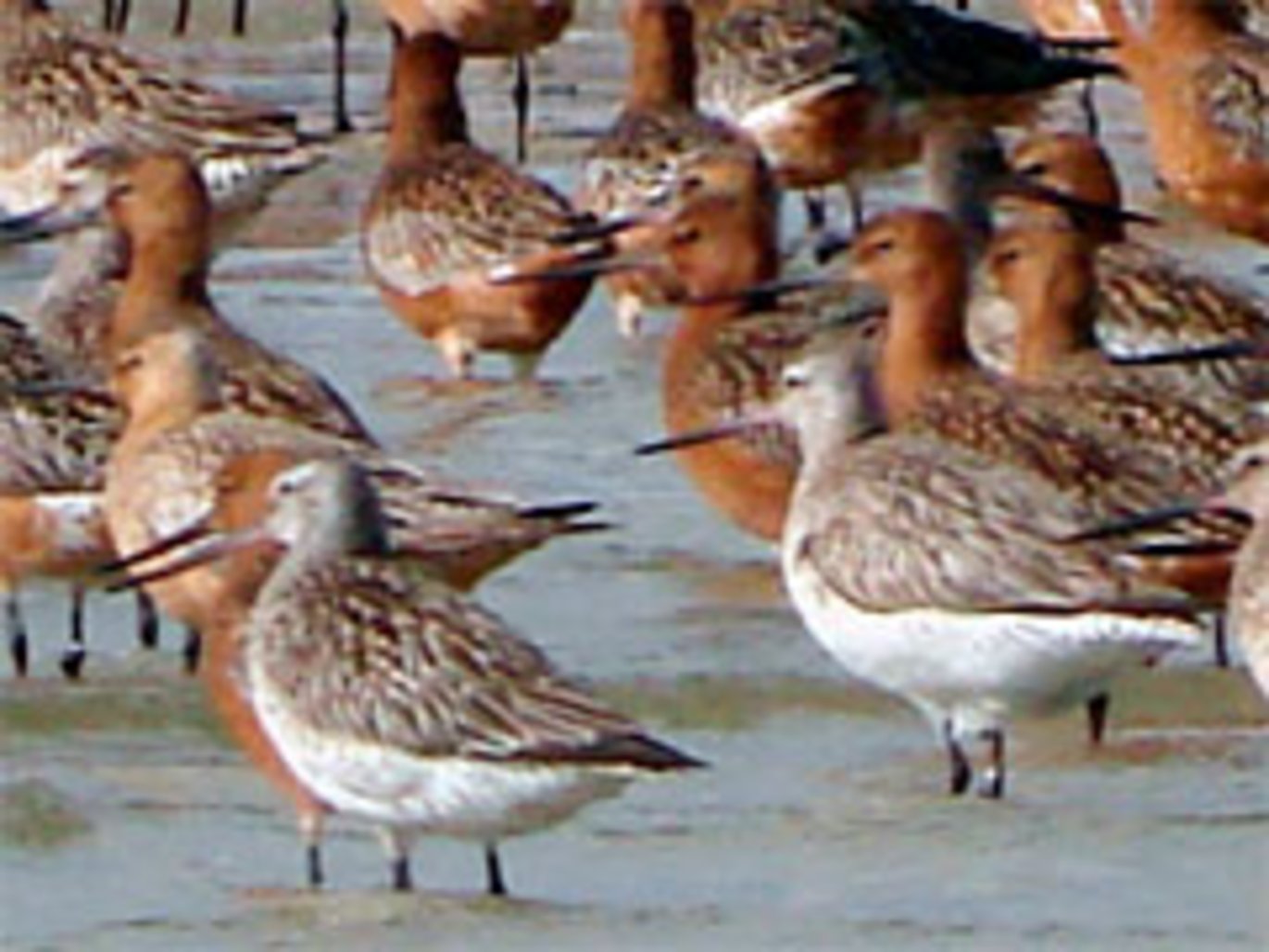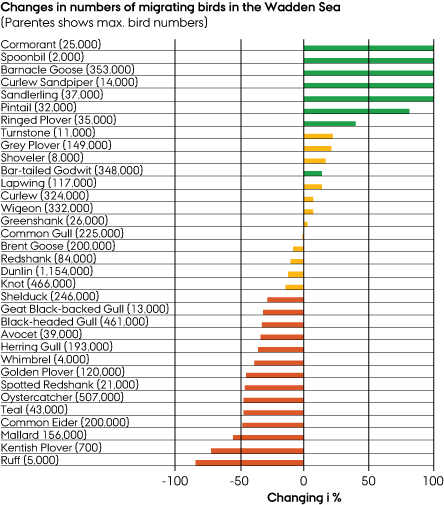Migratory birds in the Wadden Sea are sensitive to climate change
A new report on status of 34 migratory bird species in the international Wadden Sea shows that 14 bird species had declining numbers, while 20 species such as Eurasian Spoonbill, Bar-tailed Godwit, Sanderling and Grey Plover show increases.

The International Wadden Sea Area, with its 14.7 thousand km², is the most significant resting, moulting and wintering ground for waterfowl and waders along the East-Atlantic flyway between the Arctic and South Africa.
The International Wadden Sea Secretariat has now released a common report on the status of water birds, which additionally analyse trends of staging periods of the birds, their distribution in the various regions and the potential impact of climate change over the last 21 years.
14 bird species of 34 counted, such as Oystercatchers, Avocets, Kentish plovers, Herring Gulls and others, have shown significantly decreases, while 20 species such as Eurasian Spoonbill, Bar-tailed Godwit, Sanderling and Grey Plover show have increased. Particularly species that breed and wintering in North, Central or Western Europe seem to be influenced by the conditions in North-West Europe, which has a negative impact on the trends.

Changes in numbers of migratory birds in the Wadden Sea from the Netherlands to Denmark during 1987/88 - 2007/08. The figure sums up numbers for all species in the Wadden Sea during 21 years. Green and red indicates a significant increase or decreases. Yellow indicates stable numbers. Maximum numbers are given in branckets. You can se how the individual species have developed in the report.
Contact: Senior researcher Karsten Laursen, National Center for Environement and Energy (NERI), Aarhus University, kl@dmu.dk, tel. +45 8920 1503
Migratory birds in the Wadden Sea are sensitive to climate change.
(Press release from Common Wadden Sea Secretariat)
